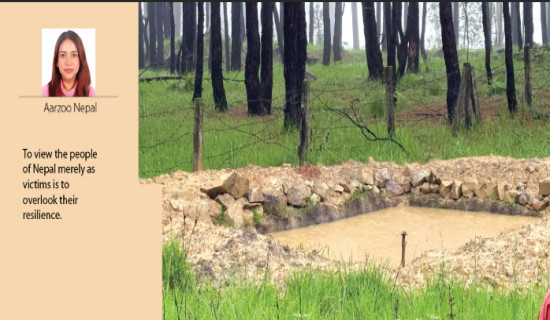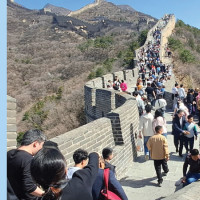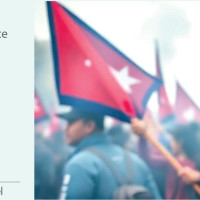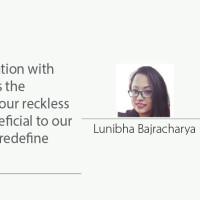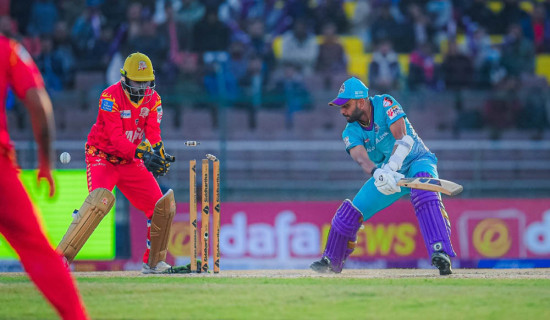- Wednesday, 10 December 2025
Struggle Of Madhes For Federal Republic
We are going to mark the 16th Republic Day on the 15th of Jestha in the Nepali calendar. The Nepalis have had a long yearning to write their own constitution through an assembly of elected representatives and establish their favourite political system in the country. They had been dreaming of it since the 1951 revolution. The Nepalis fought not only against the family Rana regime but also against the autocratic Panchayat System.
They also participated in the Maoist insurgency and Second People’s Movement. The decades-long dream came true only after the seven-party alliance and the underground CPN-Maoist agreed to write a new constitution through a constituent assembly in 2007. As a result, the first meeting of the Constituent Assembly (CA) formed after the elections held in April 2008 declared the country a Federal Democratic Republic on 15th Jestha, 2065 (28 May 2008). The day when the 238-year old Shah dynastic autocratic rule was abolished is celebrated annually as Republic Day.
Madhesi people have made significant contributions to all the struggles and movements that have occurred in modern political history. They participated in the historic political fight against the Rana regime, the pro-democracy movement against the Panchayat System, the decade-long Maoist Insurgency, and the second People’s Movement. So, they carried out their separate struggles and movements for their ethnic rights, representation, and identity over the past seven decades.
After the success of the 1951 democratic revolution, some independent youths and Madhesi leaders from the then-Nepali Congress formed a separate political outfit named the Nepal Terai Congress. Bedananda Jha led the outfit that formally floated some political demands for the first time on behalf of the Madhes people. Similarly, NC leader, Gajendra Narayan Singh, and his associates later established Nepal Sadbhawana Parishad to fight against atrocities of the state against the residents of the Terai-Madhes. After the promulgation of the 1990 Constitution, the Parishad was converted into the Nepal Sadbhawana Party. The federal system, proportional representation of the Madhesi population in state organs, and recognition of Hindi as an official language were some of the common demands of the Terai Congress and Sadbhawana Party.
When the 1990 Constitution did not address the aspirations of the Madhesi, Upendra Yadav, then a CPN-UML leader with a Communist background, formed the Madhesi Janadhikar Forum in 1997, gathering members from across the political parties. The Maoist insurgency was at its peak at that moment. Yadav and his organisation coordinated with the insurgent Maoists for the rights and identity of the Madhesis. During the period, Yadav wrote several books and theorised the Madhesis’ political demands. Yadav and his fellow leaders advocated for republicanism, federalism, secularism, equal access, and proportional representation in the state apparatus by initiating campaigns across the southern region.
During the period of the multi-party system, the existing political parties were unable to meet even the most basic desires of the common people. A number of corruption cases and political instability occurred time and again. The Maoist insurgency escalated across the country. The Royal Massacre occurred in 2001, assassinating then King Birendra, his wife, their three children, and other family members. As a result, Gyanendra Shah became the king. After his enthronement, Gyanendra took absolute power of the state, sacking the democratically elected government of Sher Bahadur Deuba. Then Seven Party Alliance agitated under the leadership of Nepali Congress leader Girija Prasad Koirala. The insurgent Maoists wanted to join mainstream politics. The Seven Party Alliance and the Maoist Party signed a 12-point agreement to work towards peace, democracy, prosperity, and social advancement by ending the autocratic monarchy.
Before the election of the Constituent Assembly, the Interim Constitution was promulgated on the basis of political consensus among the seven mainstream parties and the CPN-Maoist. However, the constitution skipped the major political demands of the Madhesis, including federalism. Their other aspirations, like the identity of Madhesis, their proportional representation in state organs, and the demarcation of election constituencies based on equal population, were also missed. The Upendra Yadav-led Forum protested the constitution. The Terai-Madhes population hit the streets to in the weeks-long mass agitation as a Madhes Revolt in the political history of the country.
The mainstream political parties and the Girija Prasad Koirala-led government were compelled to insert the main demand, ‘federalism,' in the Interim Constitution. The Madhesi Janadhikar Forum and other Madhes-based parties were again obliged to carry out another Madhes Movement next year to press for fulfillment of the remaining demands. After the fulfilment of the demands, the Constituent Assembly election was possible in April 2008. The CA’s first meeting proclaimed the country a Federal Democratic Secular Republic. Soon after, the republican country got its first president and vice president from the Madhes community.
The debating of political issues and social representations in the first CA was according to the political agenda of the Maoists and Madhes-based parties. If the first CA had promulgated the constitution, it would be a total reflection of the aspirations and demands of the oppressed class, gender, and communities. But the traditional political forces were not happy with the progressive agenda discussed in the first CA. The Madhesi people still believe that the ruling community and its political representatives, Nepali Congress and CPN-UML, had conspired to dissolve the first CA. The Madhesi people also believe the first CA was dissolved due to several faults and lapses on the part of Maoists and Madhesi-based parties as well.
The second CA was formed after another election. The 2015 Constitution was announced amid the violent protests of the Madhesis across the southern plain. Although the Madhesi-based parties have some sharp reservations about the contents of the new constitution, they participated in the two national elections of three-tier governments that were successfully held in 2017 and 2022. They also ascended to several local, provincial, and federal governments to participate themselves in the unity and prosperity of the country.
However, it is true that the Madhes people have not been fully satisfied with some constitutional provisions regarding the federal structure, language policy, citizenship and so on. But it adores the constitution’s basic ideas and spirits like republicanism, federalism, secularism and inclusive democracy.
(Yadav is a journalist at The Rising Nepal.)



